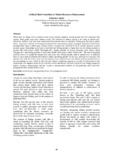| dc.contributor.author | Fujii, Tetsuo | |
| dc.contributor.editor | Kawamura, Hajime | |
| dc.contributor.editor | Iwata, Tsuyoshi | |
| dc.contributor.editor | Theparoonrat, Yuttana | |
| dc.contributor.editor | Manajit, Nopporn | |
| dc.contributor.editor | Sulit, Virgilia T. | |
| dc.date.accessioned | 2018-11-17T14:58:23Z | |
| dc.date.available | 2018-11-17T14:58:23Z | |
| dc.date.issued | 2016 | |
| dc.identifier.citation | Fujii, T. (2016). Potentials and limitations of stock enhancement programs in Japan. In Consolidating the Strategies for Fishery Resources Enhancement in Southeast Asia. Proceedings of the Symposium on Strategy for Fisheries Resources Enhancement in the Southeast Asian Region, Pattaya, Thailand, 27-30 July 2015 (pp. 136-139). Samutprakan, Thailand: Training Department, Southeast Asian Fisheries Development Center. | en |
| dc.identifier.isbn | 9786163581600 | |
| dc.identifier.uri | http://hdl.handle.net/20.500.12067/709 | |
| dc.description.abstract | In Japan, a lot of stock enhancement programs have been carried out in the last fifty years. Such programs have been successful in terms of cost-effectiveness as well as stocking efficiency. Seeds of 85 species of fishes, mollusks, crustaceans, and other aquatic organisms have been released for stock enhancement, including those of chum salmon Oncorhynchus keta and barfin flounder Verasper moseri in northern Japan, red sea bream Pagrus major in central and western Japan, and sawara Scomberomorus niphonius in Seto Inland Sea. To be successful, assessments of the natural stocks and investigations on the environment of their nursery grounds are necessary prior to seed release. However, if the natural stock is abundant compared with the capacity of hatcheries there would be no need for seed release. Healthy marine environment in the nursery ground is a prerequisite for effective seed release. Though overfishing sometimes results in high "recapture rate" of released fish, most of these cases are neither economically effective nor sustainable. A suitable fisheries management is needed. The carrying capacity of the nursery ground restricts the allowed number of released seed. In the case of hirame Paralichthys olivaceus, it tends to higher in northern Japan than in the southwestern areas. To evaluate both stocking efficiency and cost-effectiveness, YPR (Yield per Release = weight of landed 'recaptured fish' divided by number of released seeds) is recommended. YPR for successful cases is estimated to be more than 50 metric tons per 1 million seeds. Furthermore, since increased production often results in decline of price, socioeconomic studies are also important. | en |
| dc.language.iso | en | en |
| dc.publisher | Training Department, Southeast Asian Fisheries Development Center | en |
| dc.subject | Thailand | en |
| dc.title | Potentials and Limitations of Stock Enhancement Programs in Japan | en |
| dc.type | Conference paper | en |
| dc.citation.spage | 136 | |
| dc.citation.epage | 139 | |
| dc.subject.asfa | fishery economics | en |
| dc.subject.asfa | reefs | en |
| dc.subject.asfa | reef fisheries | en |
| dc.subject.asfa | resource conservation | en |
| dc.subject.asfa | fishing gear | en |
| dc.subject.asfa | Catching methods | en |
| dc.subject.asfa | habitat improvement (physical) | en |
| dc.subject.asfa | fishery resources | en |
| dc.subject.asfa | artificial reefs | en |
| dc.subject.asfa | socioeconomic aspects | en |
| dc.subject.asfa | fishery surveys | en |
| dc.subject.asfa | species diversity | en |
| dc.subject.asfa | resource surveys | en |
| dc.subject.asfa | artisanal fishing | en |
| dc.subject.asfa | coastal fisheries | en |
| dc.subject.asfa | Reef fish | en |
| dc.citation.conferenceTitle | Consolidating the Strategies for Fishery Resources Enhancement in Southeast Asia. Proceedings of the Symposium on Strategy for Fisheries Resources Enhancement in the Southeast Asian Region, Pattaya, Thailand, 27-30 July 2015 | en |



